The iconic market house that once served generations of shoppers has returned to its roots and has been transformed into a modern-day food hall whose vendors provide visitors with a taste of the world. But it hasn’t entirely moved away from being an office building, as its upper mezzanine offers space and amenities to small businesses and nonprofits.
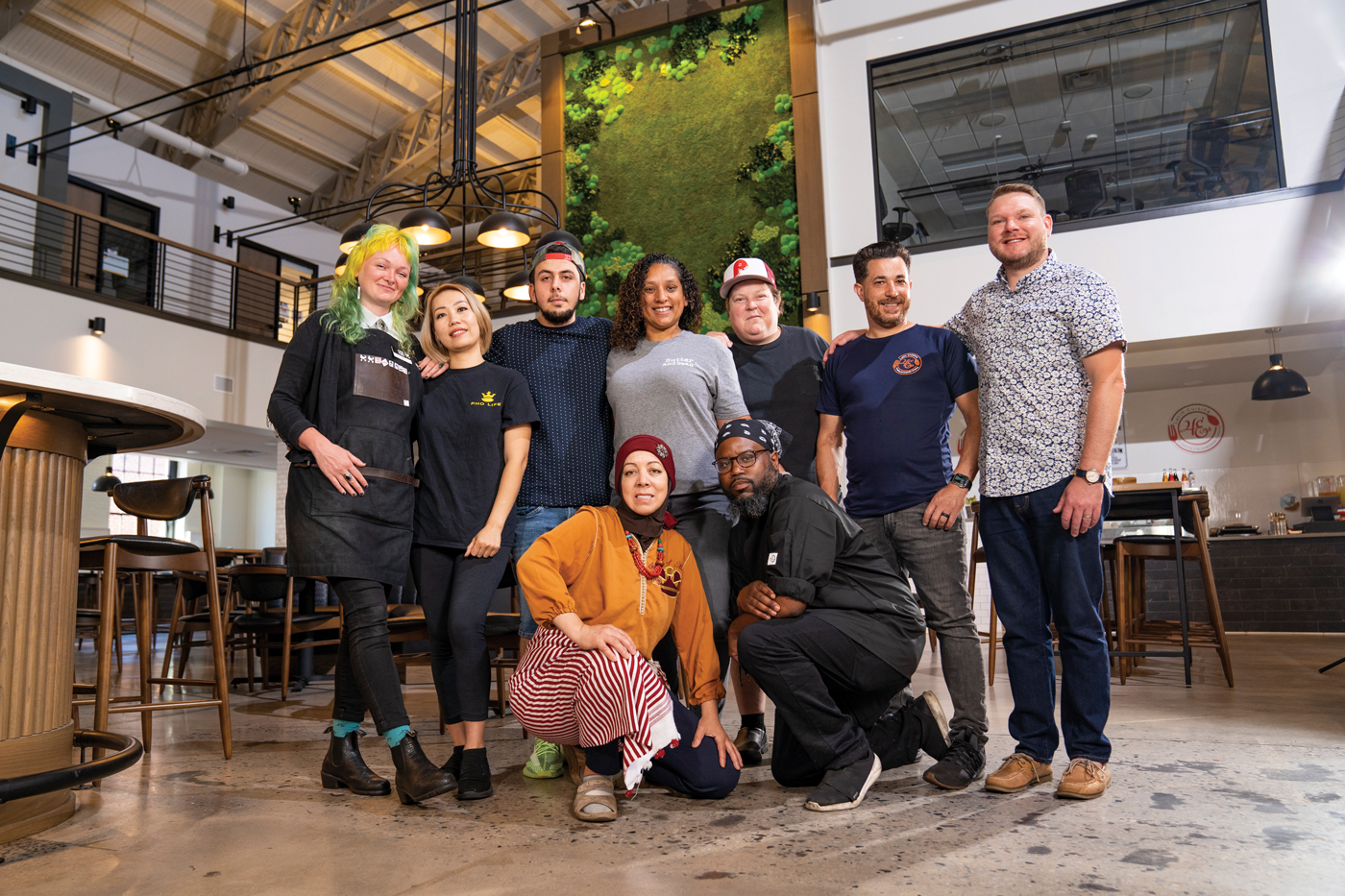
Southern Market’s food station proprietors include: (kneeling) Bushra Fakier (Flavors of Morocco) and Jonathan Forbes (X Marks the Spot). Standing left to right are Jen Splain (Bar 1888), Trang Vu (Pho Life), Mohammad Khilo (Layali El Sham), Jessie Tuno (Butter and Bean), Matt Shultz (Pizzeria 211), Eddy Rodriguez (4E’s Latin Cuisine) and Steve Wood (Bar 1888). The backdrop is composed of preserved mosses.
Food halls are making an impact on the culinary landscape across America. Large cities such as New York, Chicago, Philadelphia, Washington, D.C., and Seattle are each home to more than a dozen food halls. Some of the more well-known are Chelsea Market in New York, Revival Food Hall in Chicago, Union Market in D.C., and Reading Terminal Market and The Bourse in Philly.
Now the phenomenon is making inroads in smaller cities. Morgan Street Food Hall in Raleigh, North Carolina, for example, is garnering huge attention and great reviews. Lancaster, of course, put its name on the food-hall map with the opening of Southern Market in January.
Food halls are not to be confused with food courts. Unlike food courts, which are mostly located in shopping centers and malls and are defined by fast food and eat-and-run schedules, the vendors in food halls specialize in artisanal cuisine that is made to order and, in most cases, is healthy to boot. Trend watchers attribute the growing popularity of food halls to the fact that they attract the blue chip of consumers – the younger, more adventurous generations who love to sample international food and socialize while they do it.
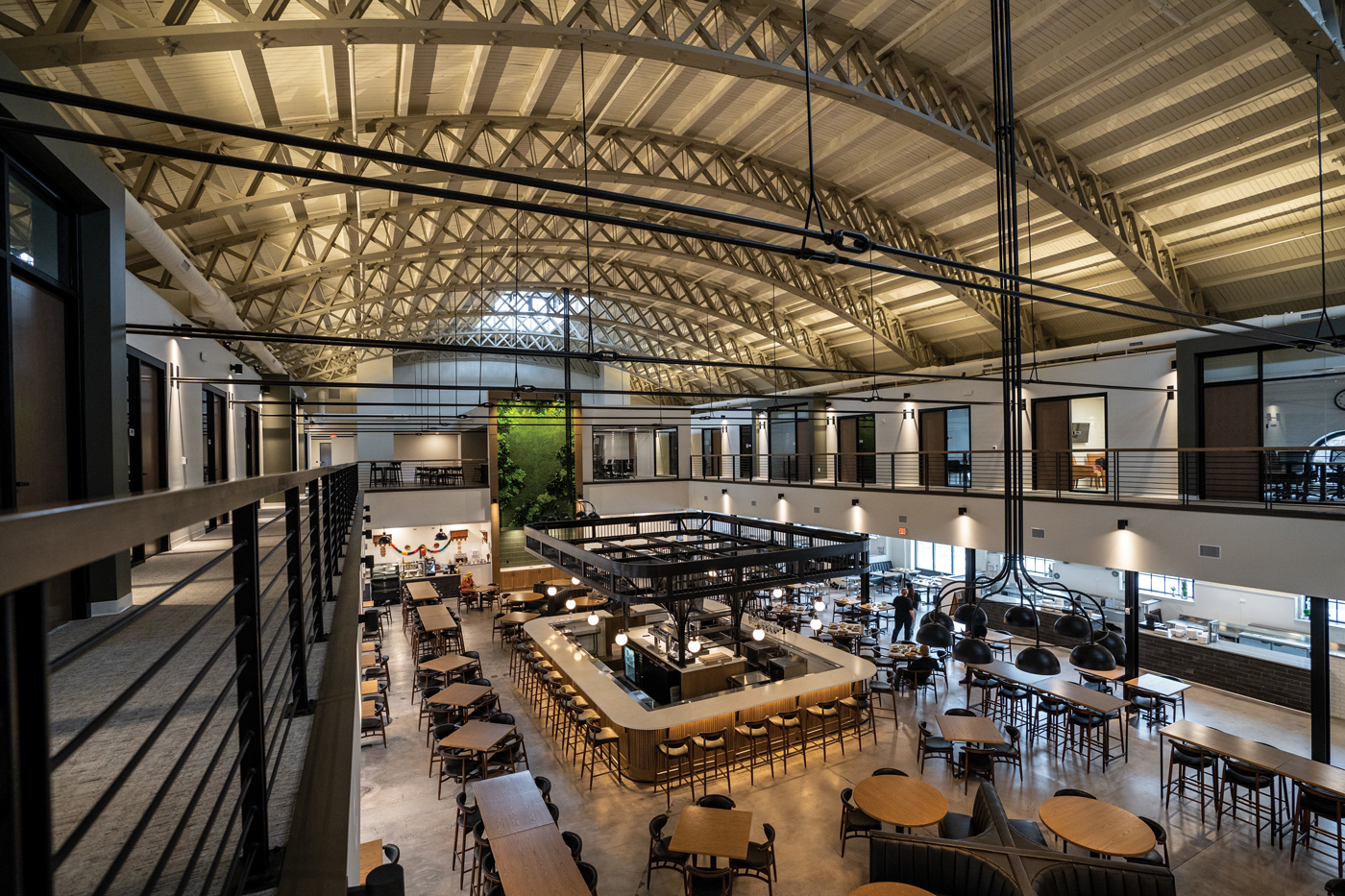
Food stations surround the 250-capacity seating area that is anchored by Bar 1888. The market house, which was designed by C. Emlen Urban, also offers mezzanine-level office space and areas that can be reserved for private social events that are catered by the food-station proprietors.
The selection that is available is prompting food halls to be seen as a new version of smorgasbords: I dare you to order from just one food station! It’s impossible to do! Multiply that by the number of people in your party and you have a modern-day grazing station on your table that encourages sharing. Morgan Street refers to the phenomenon as “cross-ordering.”
The allure of food halls is also defined by ambiance. Many have infused abandoned warehouses and other under-utilized buildings whose uses have fallen by the wayside with a new purpose in life, thus serving as prime examples of adaptive reuse.
Finally, food halls strive to be social hubs where visitors can meet up with friends old and new. In the opinion of architect Pieter Berger and developer Mark Manguera, who have designed and developed food halls in Southern California, the definitive food hall entails “inspiring food, design and architecture.” How fortunate is Lancaster to have a food hall that hits on all three of those attributes? The food is simply delicious and the surroundings are inspiring. Best of all, Southern Market is serving as an “incubator” that is providing the proprietors of the food stations with an opportunity to “get a taste” of what being the owner of a small business entails.
Historic
Southern Market is historic simply because of the architect – C. Emlen Urban – who designed it. Only 23 at the time he was assigned the project in January 1888, he was already being lauded for his work. Southern Market would be his most ambitious project to date. Cost estimates came in at $75,000, which according to a story in LNP, would equate to $2.2 million today. By April of 1888, most buildings had been removed from the site and construction progressed so rapidly that a grand opening was held September 23-24; 123 stands filled the market.
Urban’s timeless design was only altered in 1931, when plumbing and lighting upgrades were made and restrooms were added. Five years later, a heating system was installed.

Shared spaces such as this meeting room fill the private-access mezzanine area that is home to 19 offices and other common spaces.
The rise of the age of automobiles and the expansion of suburban areas in the post-war years nearly caused the demise of Southern Market. Shoppers coming into town from outlying areas began to complain about the lack of parking in the vicinity of the market. A 55-car parking lot that was established across Vine Street from the market did little to resolve the situation.
The issue came to a head in 1950, when the city announced plans to purchase the market and convert it into a parking garage or even tear it down. A petition circulated by a standholder successfully thwarted the plans but by 1952, a similar proposal was introduced. Mayor Howard Bare ultimately announced the plan was a go and standholders would be moving to Central Market, where they would maintain Wednesday and Saturday hours in the shared space. The closing was announced for April 15, 1953.
Once again, however, Southern Market would get a reprieve. City Council members recommended that a referendum on the fate of the market should be placed on the primary ballot. Voters stymied the planned closure by a two to one margin. Despite their support via the ballot box, shoppers continued to avoid the market.
A decade later, the Lancaster Planning Commission called for the closure of the market. City Council again came to its rescue and invested more than $90,000 for upgrades.

Chris Ballentine, who is the community relations manager for Willow Valley Communities, has an office at Southern Market and is on the premises two or three days a week.
By 1975, standholders from both markets saw the writing on the wall and petitioned the city to consolidate the markets. A competing petition successfully kept Southern Market from closing. It was back to the drawing board. More money was invested in the market. In 1977, the roof was replaced and the basement was renovated to create space for the Conestoga Valley chapter of the Pennsylvania Guild of Craftsmen to set up shop. Nevertheless, attendance waned and a regulation regarding bus parking only compounded the situation.
By the 1980s, 50% of stands at the market were not open on Saturdays. Mayor Art Morris approved expenditures for a study that would provide guidance for resolving the issues facing Southern Market. The results of the study (1984) suggested the two markets be consolidated and the building be adapted to serve as perhaps a visitor’s center, a police station or a recreation center. A year later, the consolidation of the two markets was made official. Central Market would be open Tuesday, Friday and Saturday. Southern Market was slated to become the home of the Lancaster Chamber of Commerce & Industry, city offices/council chambers and a visitor’s center.
Yet another petition was circulated, but this time more than a dozen of the largest standholders deemed it was time to move on. The market closed its doors on April 26, 1986, after 98 years of continuous operation. The conversion to office space commenced in 1988.
Yet another chapter in Southern Market’s history was written in the last decade, when the city relocated its offices in 2014, followed by the Chamber in 2017.
The Dawn of a New Southern Market
With Southern Market standing nearly empty, new ideas emerged on how it could be utilized to bring increased foot traffic to the southern edge of Downtown Lancaster. Two new players emerged with viable ideas. One was Lancaster Equity, a community-development corporation whose aim is to substantially reduce poverty in the city over the next 10 years through entrepreneurial programs and ensuring people earn a living wage and have access to affordable housing. They saw Southern Market as an avenue to help people achieve those goals through introducing the food-hall concept to Lancaster. ASSETS, a nonprofit organization that assists budding entrepreneurs and whose office was located inside the market, saw a similar path.
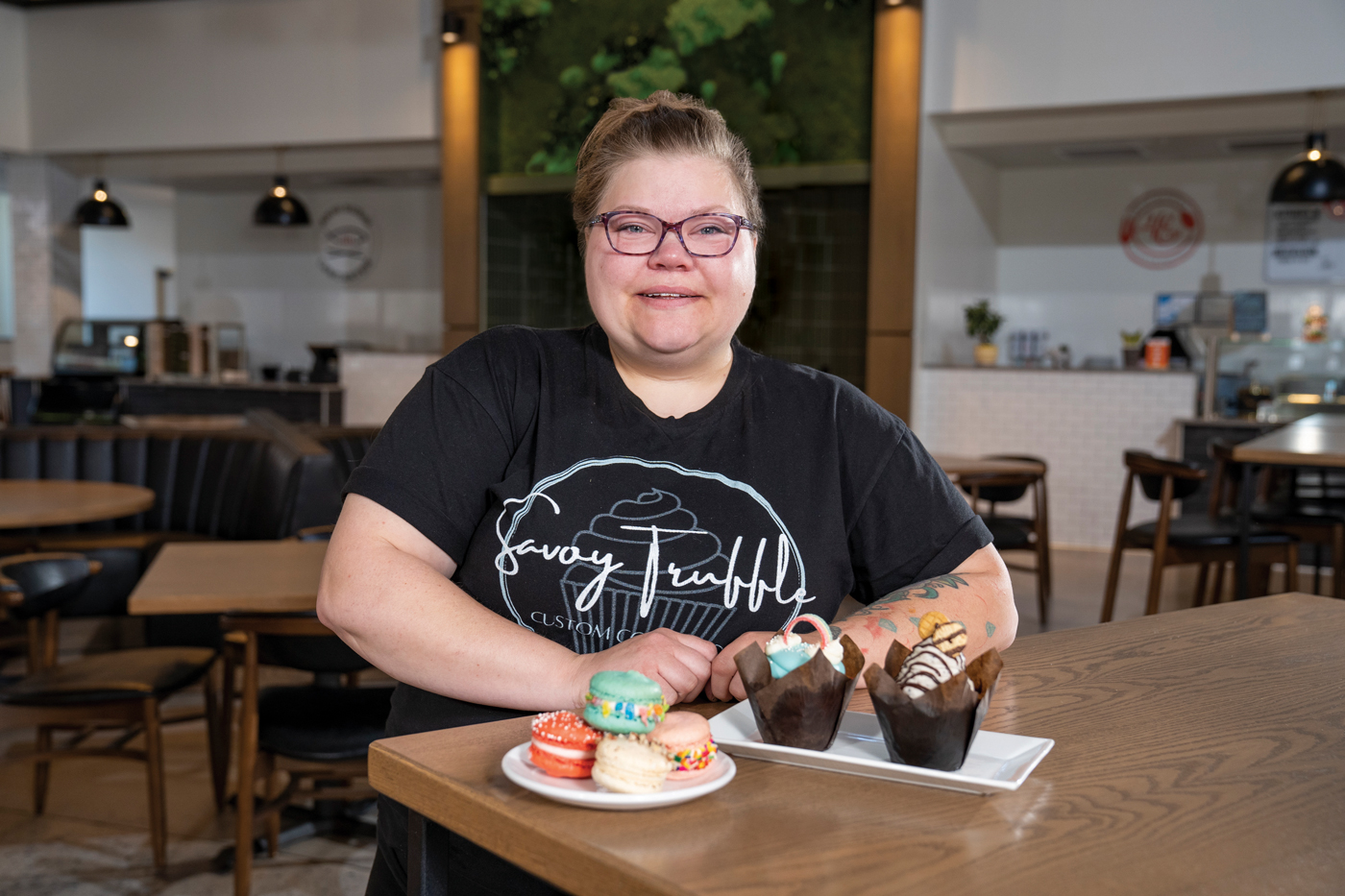
Brittnie Jones, owner of Savoy Truffle, is the first proprietor to leave the nest, as she has taken over an empty space at Champion Forge Center on Harrisburg Avenue. (A late August opening was her goal.) A self-taught baker, Brittnie and her family made the move to her husband’s hometown of Lancaster. “It’s a family affair,” she says of her business. In her new location, Brittnie will offer her signature cupcakes, pies, macarons and cakes, as well as grilled cheese, loaded hot dogs and more.
The strategy was nearly derailed when a Maryland-based company submitted plans that would have transformed the building into a home-improvement store. When potential tenants backed out, the company withdrew the plan.
Lancaster Equity then submitted a plan that included a proposed food hall and was successfully able to purchase the building from the city. Lancaster Equity and ASSETS both had big dreams but feared a lack of funding going forward would not allow the project to reach its full potential.
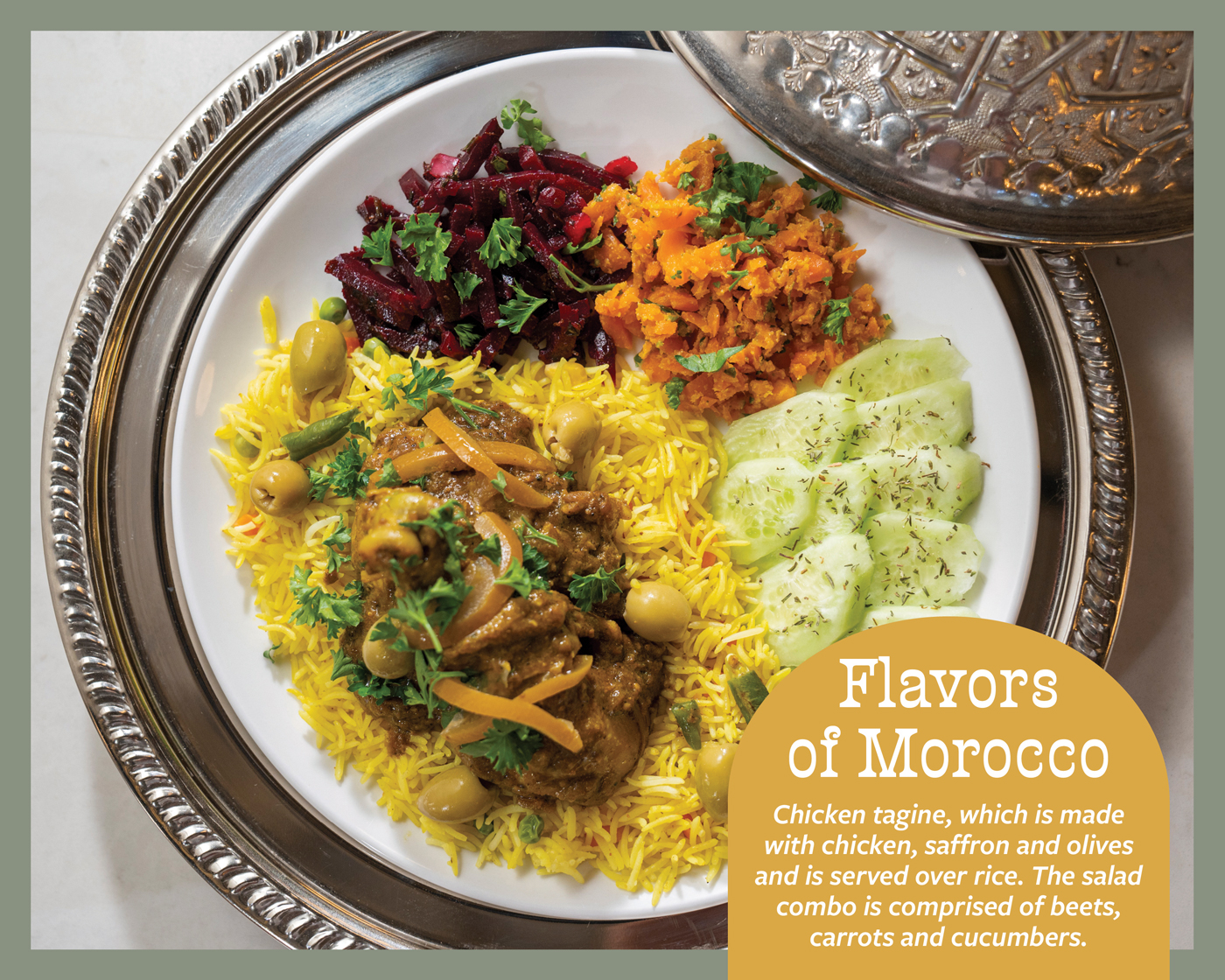
Bushra Fakier arrived in Lancaster – via Morocco and Canada – in 2014 with her husband, Feizel Fakier. Bushra, who has a PhD in physics, always enjoyed cooking and launched a business at Lancaster Marketplace. When the pandemic put Lancaster Marketplace on pause, requests for her food prompted Bushra to install a commercial kitchen in her home to meet the demand for catering and to-go food. She also began hosting impromptu – and very popular – pop-up dinners. Bushra’s food is not only delicious and beautiful, but it’s healthy, as she pairs fresh local ingredients with authentic spices, herbs and rubs from her native Morocco. Her menu offers everything from appetizers to desserts.
Fortunately, a new player entered the picture. Willow Valley Communities had announced plans for a new venture that will be located just across Vine Street from the market. Mosaic, a 20-story high-rise that is slated to welcome residents in late 2025, will provide Willow Valley Communities with an urban option for potential residents.
The team from Willow Valley Communities was interested in learning more about Southern Market. They saw the possibilities that collaborating with Lancaster Equity and ASSETS on this unique project would bring to Lancaster. Willow Valley Communities, with its extensive food-service experience, proved to be the missing part of the puzzle. “The ironic thing is that the Thomas family had a stand at Southern Market,” says Chris Ballentine, Willow Valley Communities’ community relations manager, referring to the founders of the 55-plus community. “With food as its centerpiece once again, the market was coming full circle.”
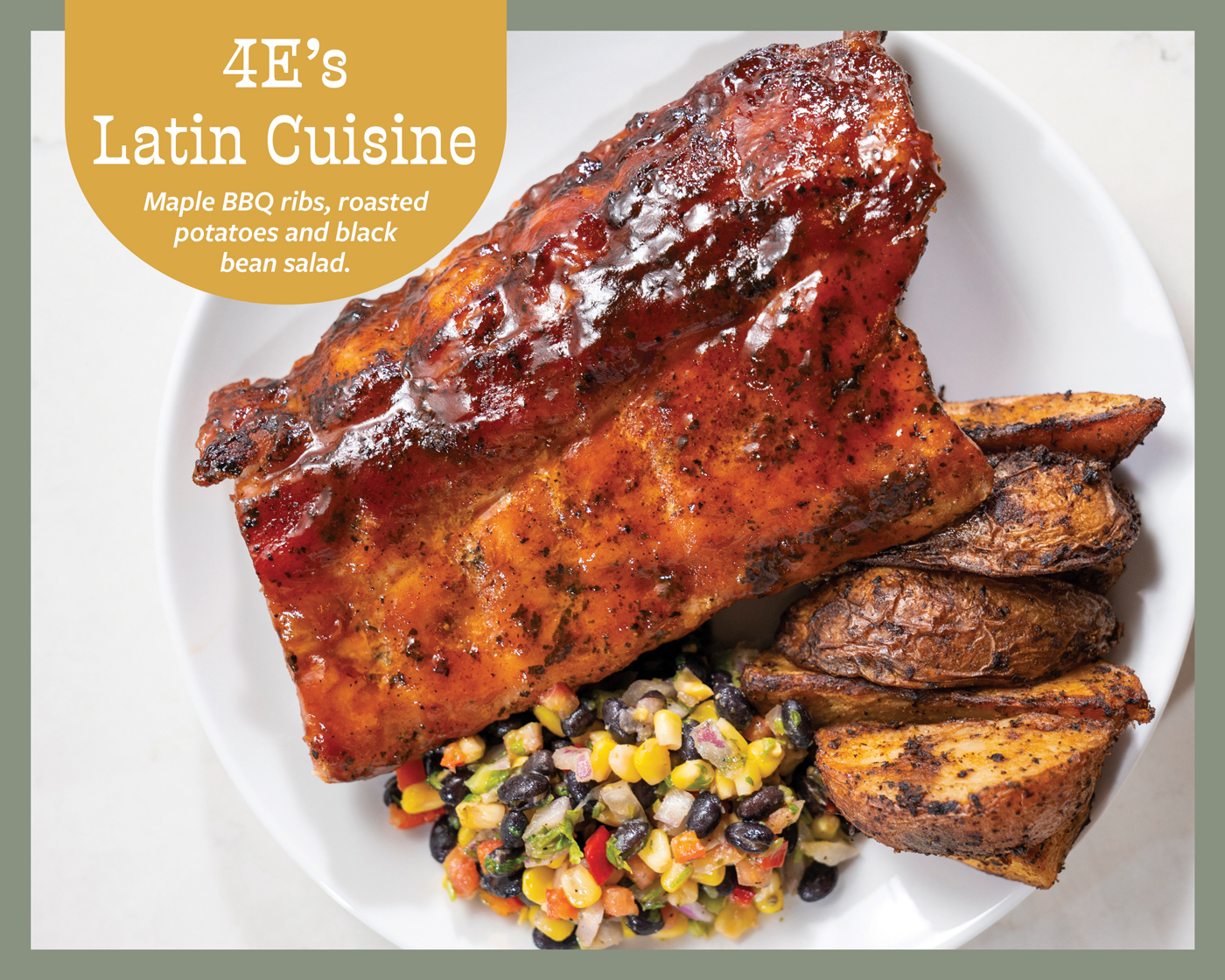
Eddy Rodriguez, who hails from the Dominican Republic and moved to New York as a teen, brings industry experience to his eatery. Prior to Southern Market, he managed the kitchen and food services for SACA (Spanish American Civic Association) in Lancaster and operated a catering service. The “E” in the name of his eatery refers to himself and three other family members. His food, which includes hand-helds such as Cuban sandwiches and empanadas, blends the flavors of the Caribbean with the farm-fresh products of Lancaster County. He calls his new enterprise a “Healthy Life Hospitality Company.”
The Work Begins
As project developer, Willow Valley Communities brought in Willow Street-based CCS Building Group, whose expertise centers on creating “highly intentional spaces” and extends to both new commercial and residential construction and historic/adaptive reuse. “Willow Valley Communities has a long-standing history with CCS Building Group,” says Maureen Leader, Willow Valley Communities’ public relations and communications manager.
Chris notes that visitors who frequented Southern Market when it was essentially an office building, immediately comment on the bright and airy atmosphere that now exists. “It used to be very dark in here,” he says, referring to the dark wood that once defined the interior spaces and the fact that a second floor that had been installed to accommodate the Lancaster Chamber, essentially keeping light from the windows along the roofline from reaching the ground floor. “When the Chamber’s staff visited for the first time, they could not get over how different the building now looks. They kept commenting on how bright the interior is,” Chris says.
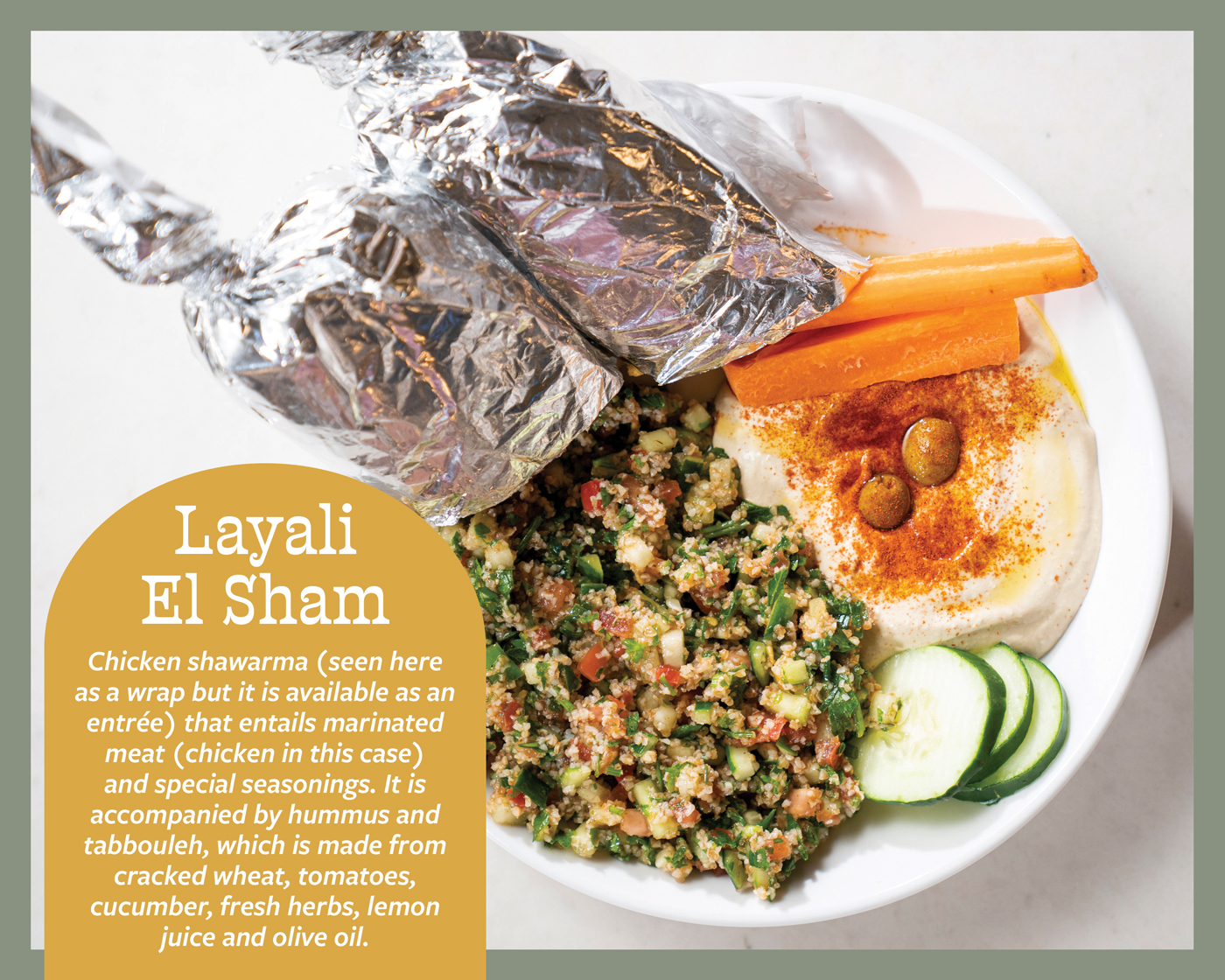
“Cooking from the heart” is one of the main ingredients in the food that the Khilo family prepares at their food station. They also take pride in the fact that they can share the “magical flavors from the crossroads of civilization” – their native Syria – with visitors to Southern Market.
Office space still exists – now 19 such spaces are found on the mezzanine level that was created by eliminating the second floor. Consultants and podcasters are represented among the small businesses, while nonprofits such as ASSETS and a theatre company work out of the private-access offices and share common spaces such as meeting rooms, a kitchen and restrooms. Chris has an office in the building and is on-site two or three days of the week. He remarks that between the quietude, the architecture and a view of the food hall, it makes for an inspiring place to work.
Community spaces are another element of the makeover. Such spaces can be rented for purposes such as meetings and social events, with catering supplied by the market’s vendors.
Construction, restoration and remodeling got underway in 2020; Southern Market’s public opening took place on January 27, 2022.
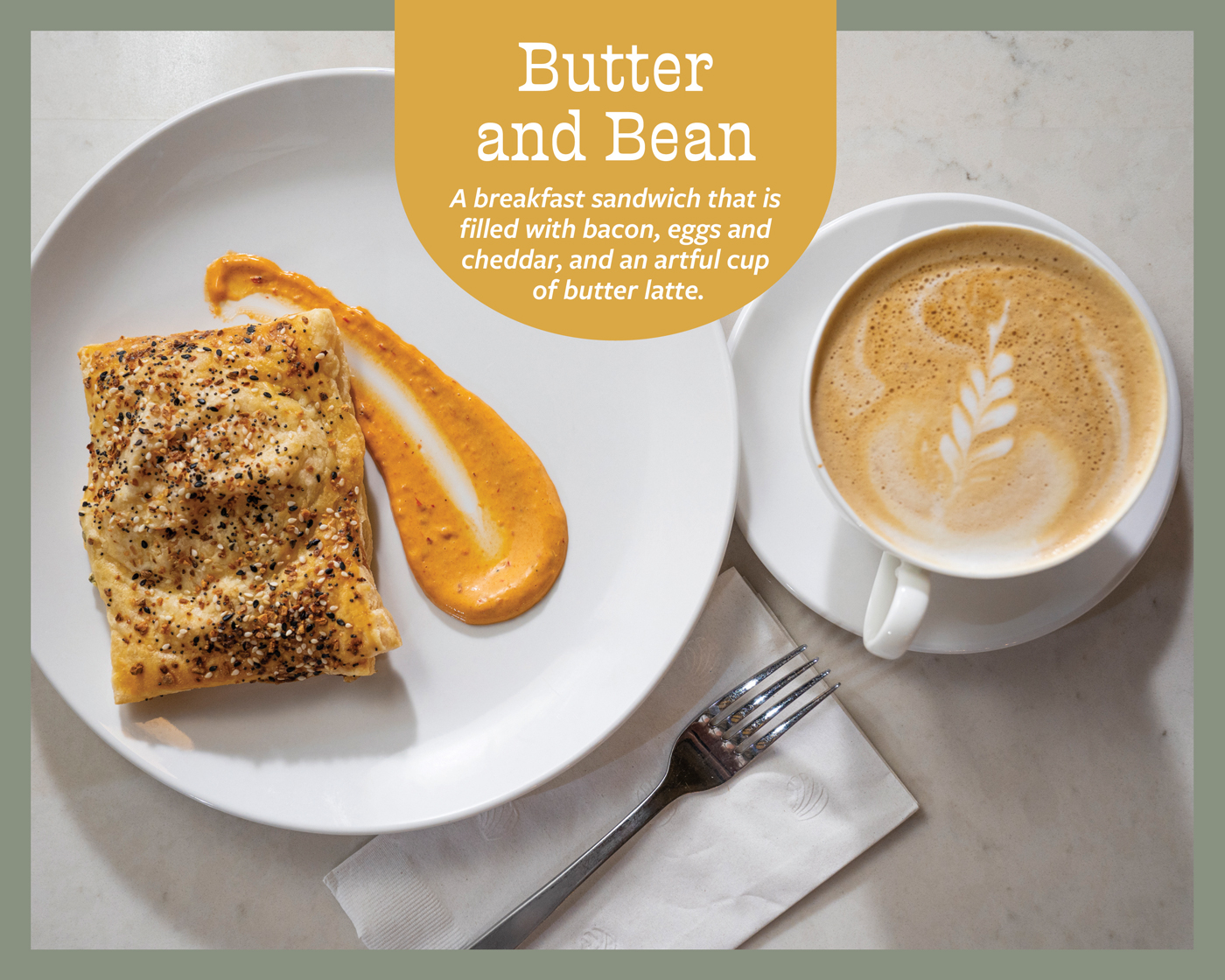
Jessie Tuno calls coffee her passion. She brings 20-plus years of experience in the hospitality industry to Southern Market. Her charming café is the perfect place to indulge in one of her trademark coffee or espresso works of art – made with Latin American coffee beans – and enjoy a delicious pastry (made in-house). Specialty syrups are made in-house, as well. The menu also features cold brews, lattes, frappes and smoothies.
A Taste Sensation
Of course, the main attraction of a food hall is the variety of cuisine that is available. In addition to the worldwide choices, all food is prepared on-site, fresh by each of the chef vendors in the shared commercial kitchen. Southern Market’s concept is based on an incubator approach. “The goal is to help folks who want to establish a successful and viable business,” says Maureen. The food stations at the market are operated by vendors whose experience in the industry is just as diverse as the food they offer. Vendors applied to become a part of Southern Market through the market’s website and were connected with ASSETS, which has launched a Food Industry Lab to work with individuals interested in the industry and specifically with vendors who are chosen to take a space in the food hall.
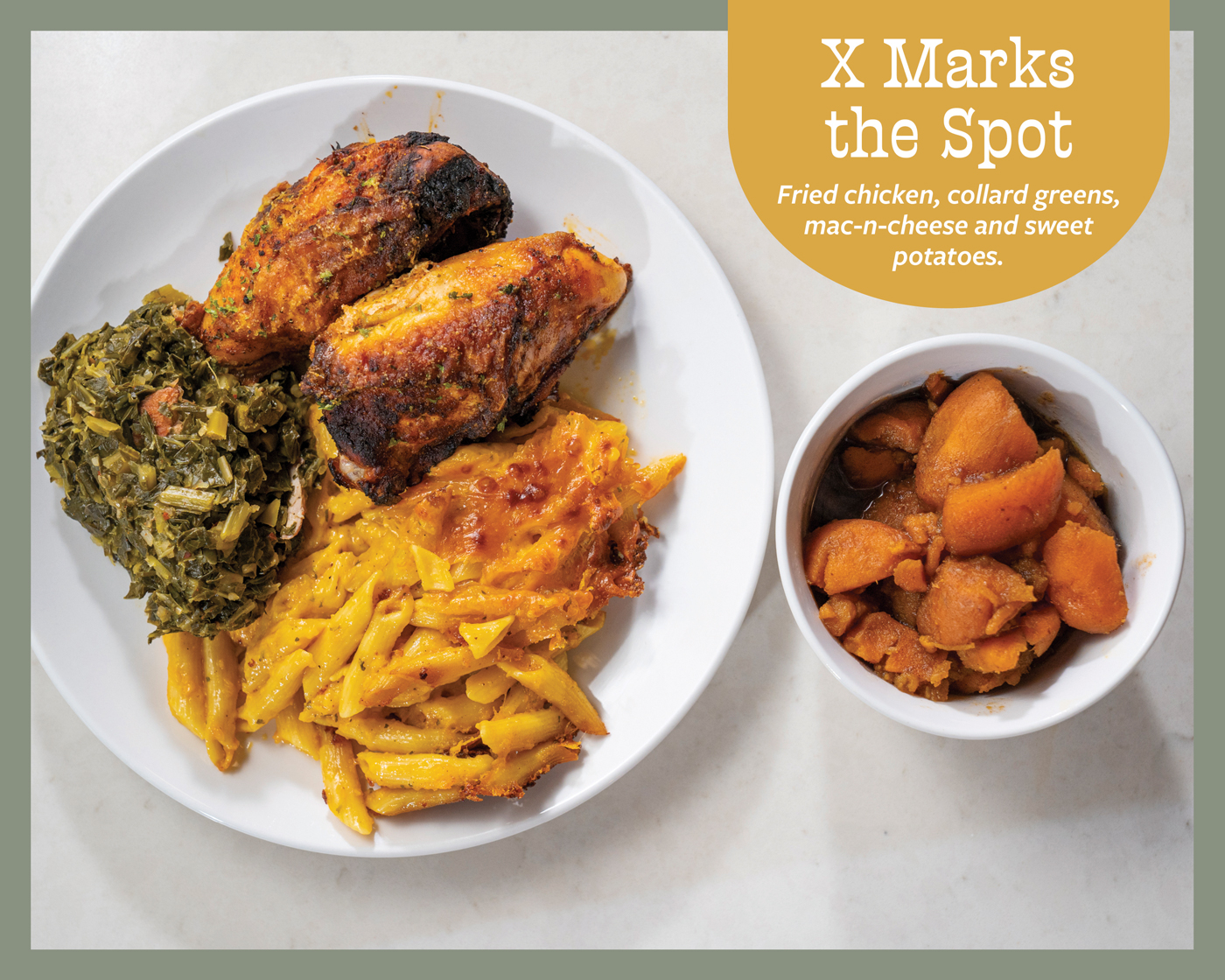
Owner Jonathan Forbes, who grew up in Lancaster, has been cooking for as long as he can remember and determined as a teen that a career in food would figure into his future endeavors. His career stops included two private clubs (including a five-star premium club) and operating a catering business. At Southern Market, the menu focuses on Southern soul food and offers such classics as fried chicken and fish, cornbread, sides such as collards and green beans, rice pilaf and a beverage called church punch.
Inside the market, there is space for a total of 10 food stations. As of mid-July, the market was searching for a replacement for one vendor who will be opening a brick-and-mortar location, as well as for one that will fill the last space at the front of the building. “The first thing that needs to be established is whether a prospective vendor is a good fit,” says Sharon Habanec, who is Willow Valley Communities’ senior vice president of culinary services and is on-site several days a week to work with the vendors.
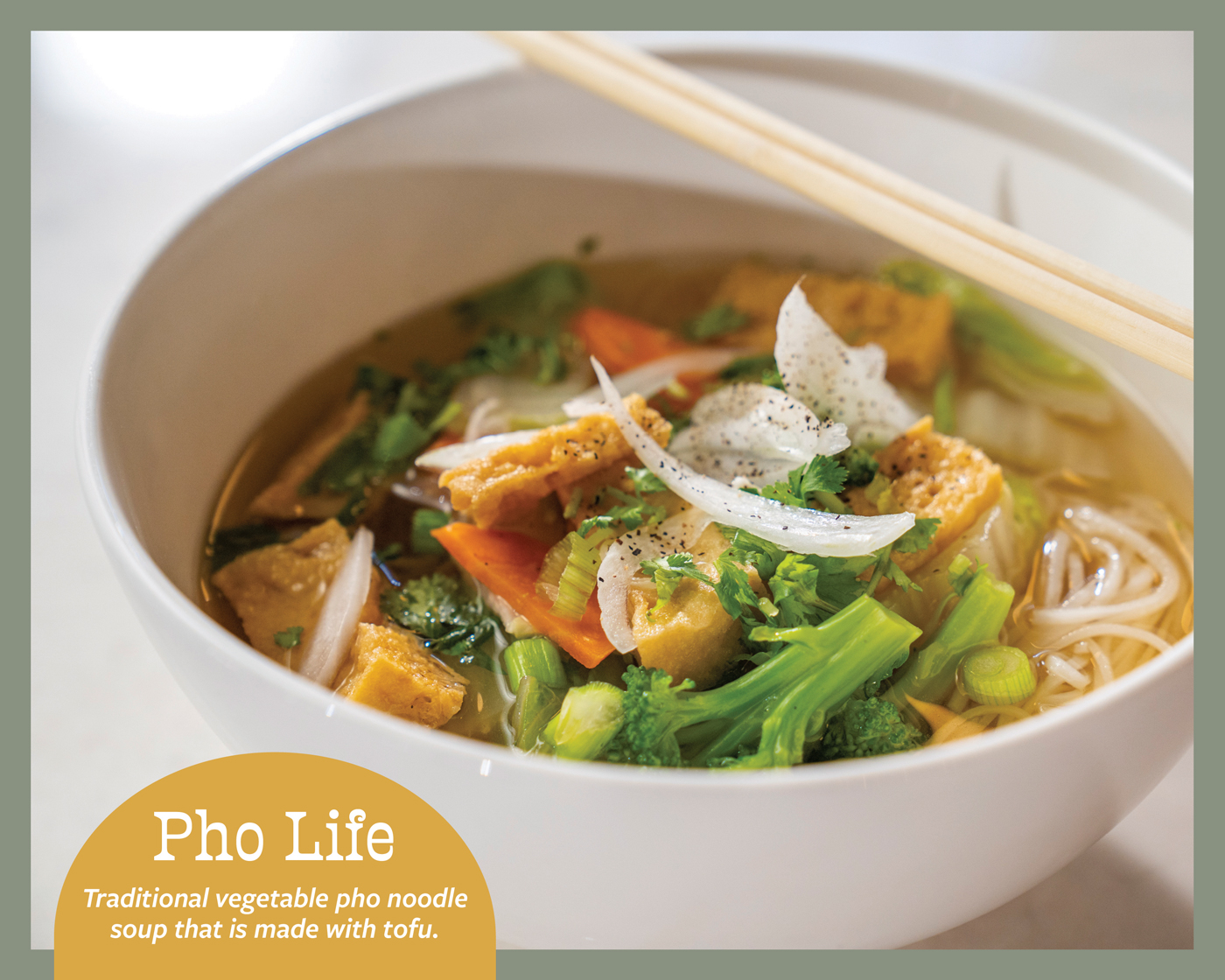
Owner Trang Vu and her business partner, Davaun Dorsey, are acquainting Lancaster with this traditional noodle soup that is made from rice noodles, broth, cilantro and green and white onions. Pho, which is considered to be Vietnam’s official dish, is versatile – a hearty comfort food for winter but light enough for summer’s hot weather. The menu also features noodle salads, egg rolls and drinks such as Vietnamese iced coffee.
“The ‘fit’ addresses both the culinary offerings and the quality of the products, as well as adding menu items that provide new and unique offerings of the food hall,” she explains. A diverse menu, of course, helps to entice visitors.
A camaraderie factor ensures the food hall runs smoothly. “Because everyone has varying degrees of experience, we are seeing that they all are helping each other,” Sharon notes. “Everyone seems to really get along well.”
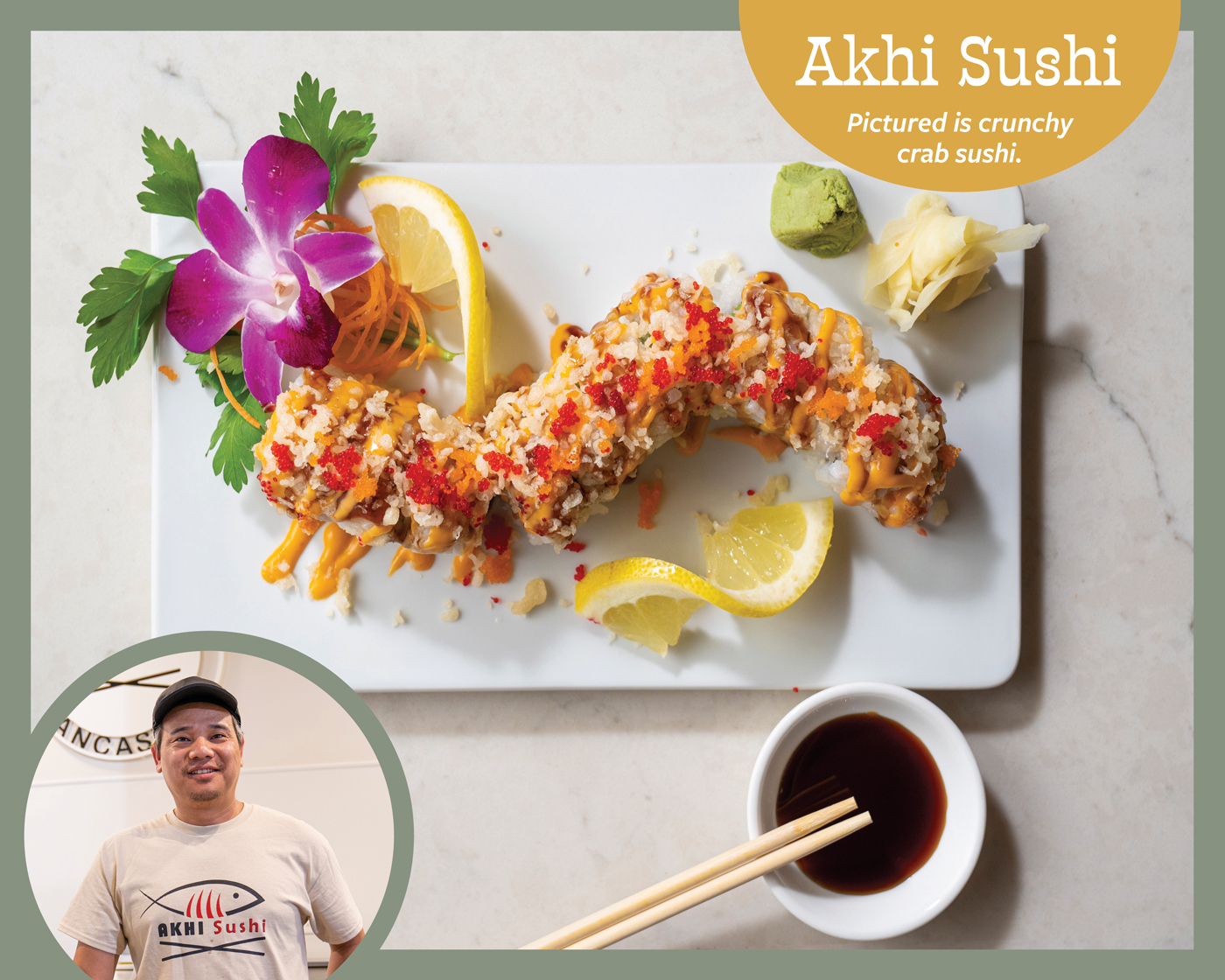
Owner Sai Nu, who emigrated from Myanmar in 2012, is Southern Market’s newest vendor. Formerly a social worker, he perfected his skills at making Japanese and Burmese-inspired sushi through working at restaurants owned by friends in Lancaster. Now he has taken the next step and is operating his own food station at Southern Market, where the extensive menu includes poke bowls, cooked and raw maki and sushi combos. Sai Nu is happy to be a business owner and is thankful that he now has a way to “pay back the community that has helped me and my family.”
Nine months in, Sharon is noticing that several vendors are weighing their options and are realizing that operating a full-fledged restaurant may not suit their personal goals and circumstances. Some have shared that being at Southern Market is satisfying their dreams and even taking them in other directions such as catering and operating a food truck.
Another element of the food hall – Bar 1888 – has proven to be very popular with visitors. Headed by mixologist Steve Wood, the cocktail menu is unique in that it offers new twists on the classics, as well as innovative drinks that complement the wide-ranging culinary choices.
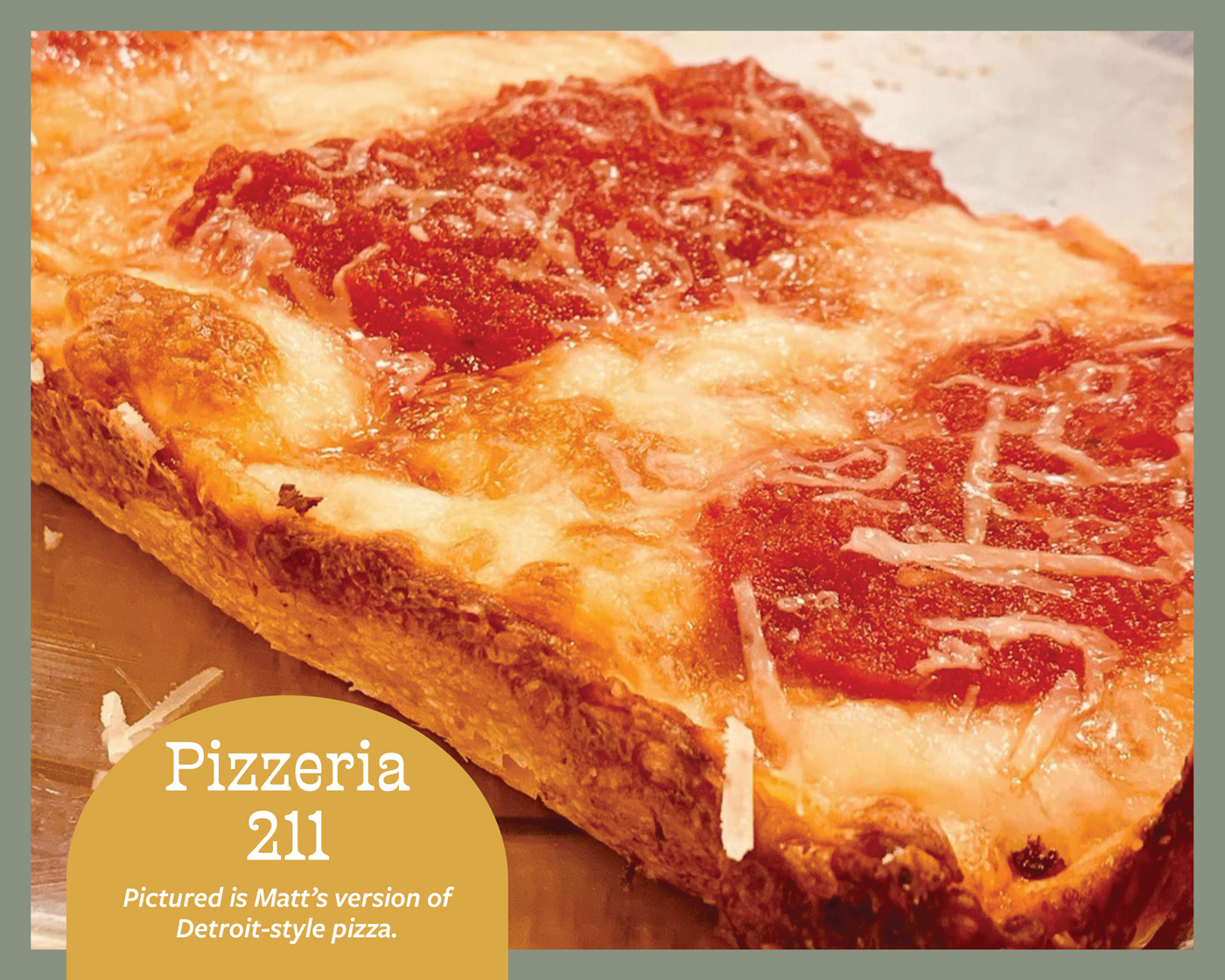
Matt Shultz made a life-changing career move when he turned 40. While Matt had spent his career in the jewelry industry, what really dazzled him was pizza. In fact, he loved making pizza so much that he occasionally worked part-time in Philadelphia-area pizza restaurants. The milestone birthday convinced him to follow his dreams and with the support of his family, Matt moved back to his hometown of Lancaster. Now he is sharing his culinary gems – Detroit-style pizza, sandwiches, cheesesteaks, chicken parm and and salads – with visitors to Southern Market.
A Learning Process
Just as the vendors are navigating their way, the Southern Market team is as well. Prepping for large downtown events like July’s Roots & Blues Festival is critical. “We were packed for that,” says Sharon. First Fridays also bring in additional traffic. Sundays see an uptick in business due in part to the fact that St. Mary’s Catholic Church is Southern Market’s neighbor.
Sharon notes that while locals are flocking to Southern Market, tourists are discovering it, as well. The return of conventions and other events at the Marriott is already generating traffic to Southern Market. It’s also become a favorite destination for residents of Willow Valley Communities. “I see a lot of familiar faces,” Sharon adds. Maureen notes that shuttle service between Willow Valley Communities and Downtown Lancaster is encouraging residents to pay a visit to Southern Market. “It’s just another way Willow Valley Communities is supporting the city,” she says of residents who attend cultural events, shop and volunteer with nonprofit organizations and schools.
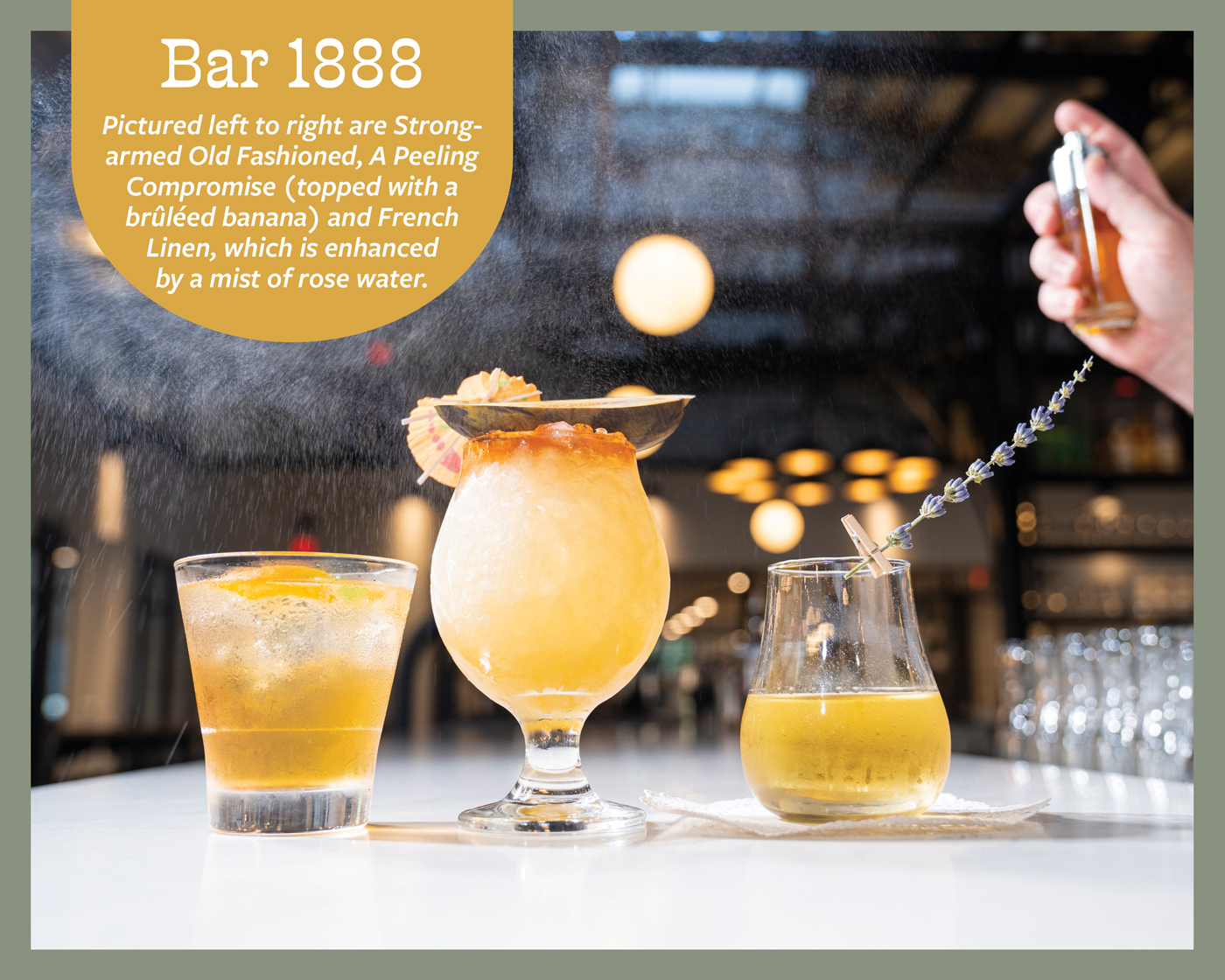
A menu created by mixologist Steve Wood entails a mix of locally sourced ingredients and a globally influenced cocktail culture. Here you’ll find classics that have been tweaked to bring a modern spin to the renowned cocktails of the past. Unique cocktails inspired by the offerings at the various food stations also set the tone at Bar 1888. Microbrews and wine are also served.
Tweaking opening hours has resulted in an increase of lunch traffic. Outdoor dining was added at the front of the building and is proving to be popular. Trivia contests are held Wednesday evenings (on a Wednesday in mid-July, a record 26 teams competed), while Thursday nights are devoted to Music Trivioke. Live music is offered on weekends. “Southern Market is also getting lots of inquiries about renting the community event spaces,” Maureen adds.
Chris is excited by the fact that Southern Market will create a new hub on the southern edge of downtown. “Between Mosaic and the work that LancasterHistory is doing on the other corner [at the Stevens & Smith Center], this end of downtown is primed to become a destination,” he points out. “It’s exciting to be a part of something that is only getting started.”
Southern Market is located at 100 S. Queen St. in Lancaster. Food Hall hours are Wednesday and Thursday, 11:30 a.m.-8 p.m., Friday and Saturday, 11:30 a.m.-9 p.m., and Sunday, 11 a.m.-6 p.m. Butter and Bean, Pizzeria 211 and Bar 1888 maintain extended hours. For details, visit southernmarketlancaster.com.
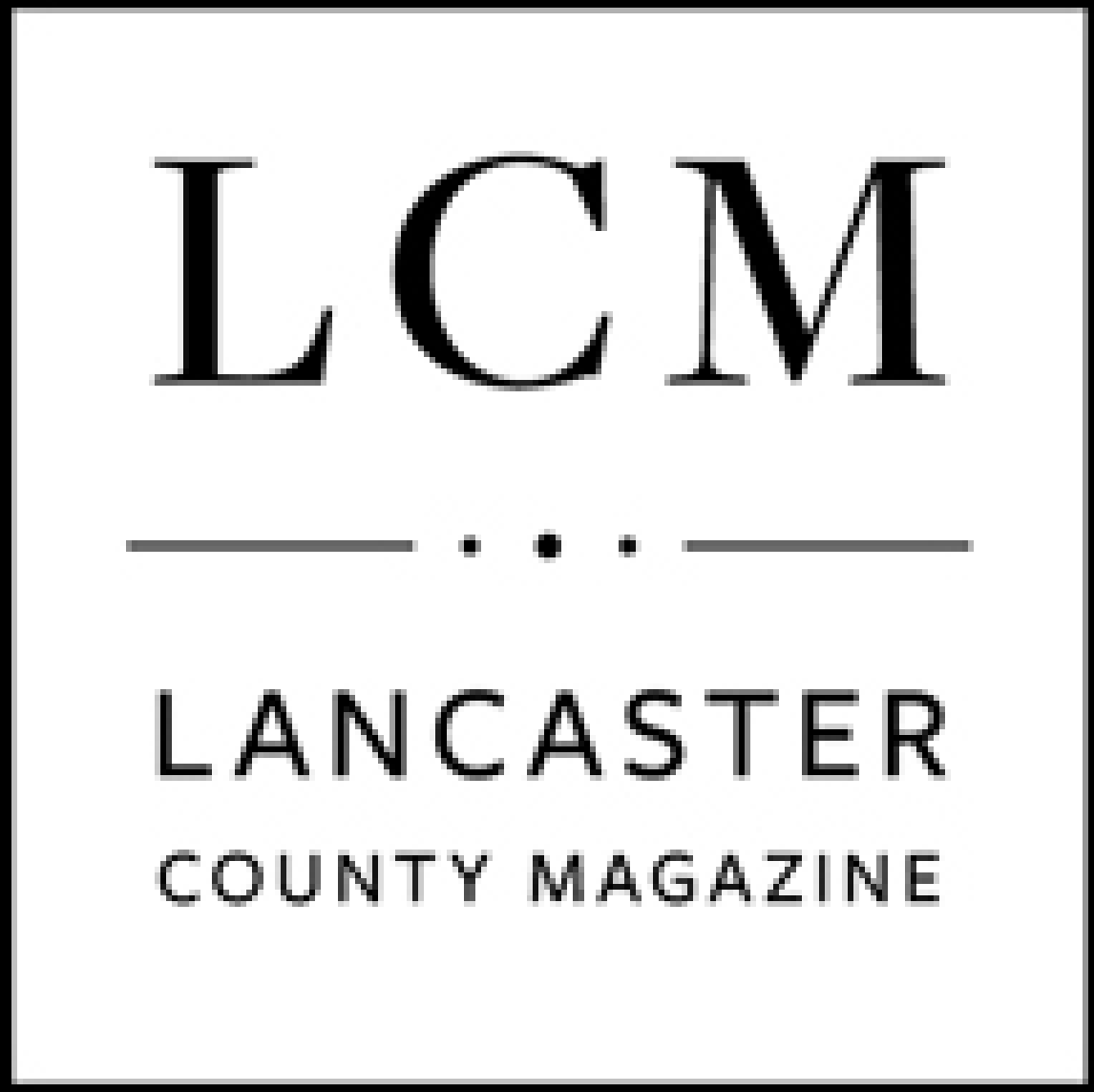
what are the hours for the market
I was there twice in August with friends for trivia night. This is a wonderful space and phenomenal idea! Loved the Sushi and Latin cuisine. The open feel is so inviting with the bar centering the space. Loved it. Hope to come back the next time I am in the area!